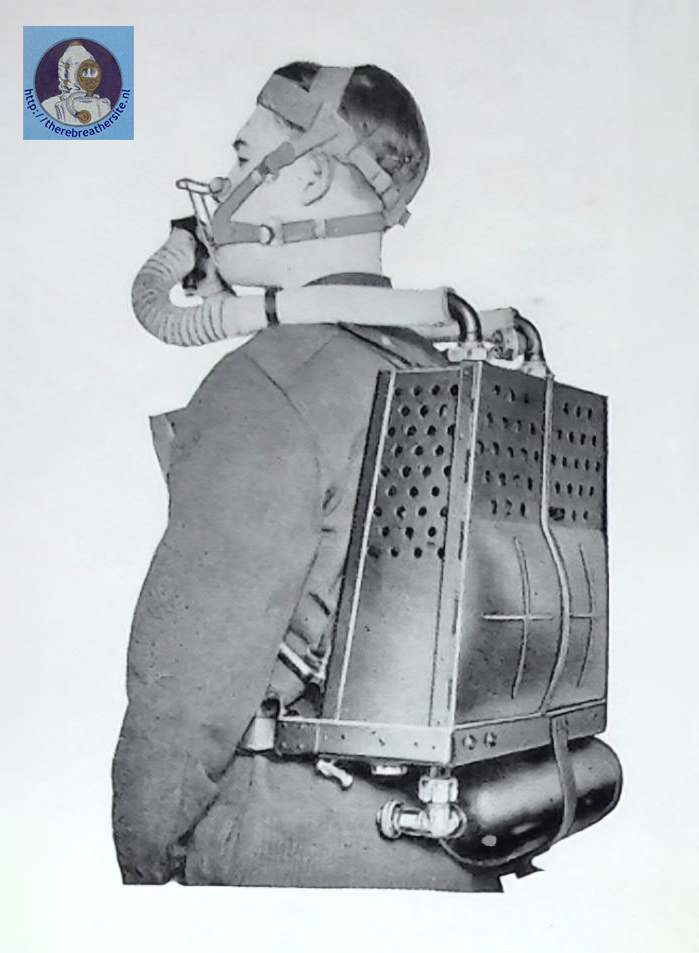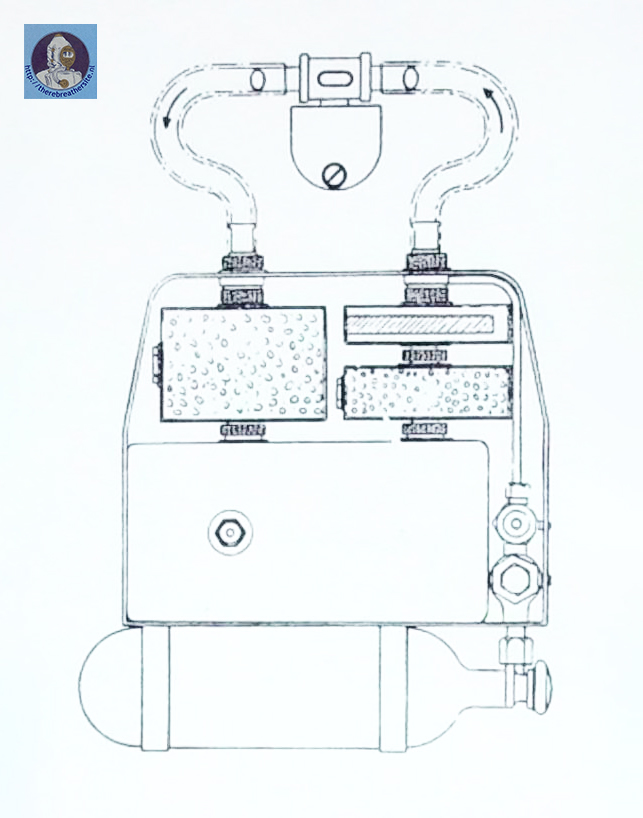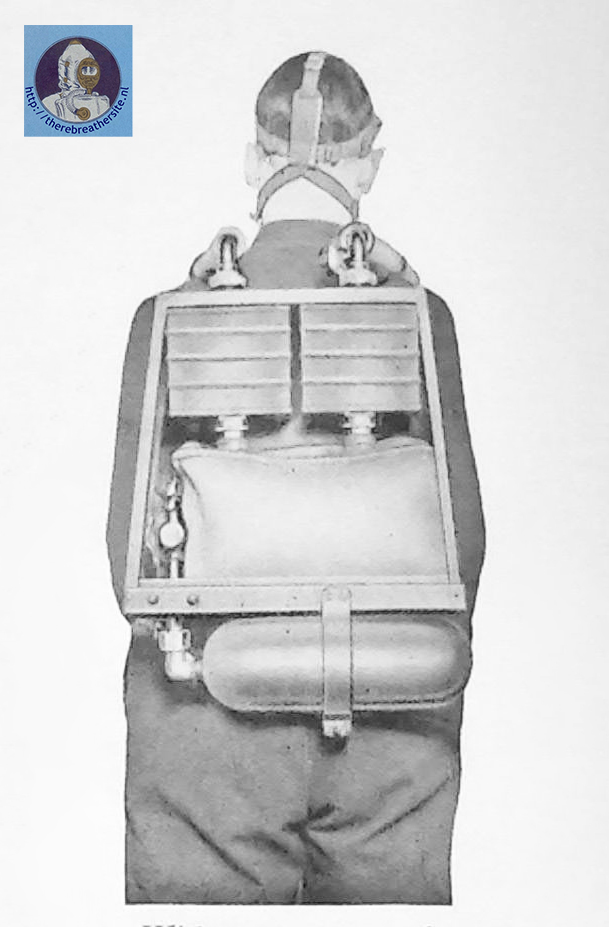
Siebe Gorman Vitox oxygen rebreather
Constant feed Oxygen rebreather
This apparatus is on the same regenerative principle as that of the “Proto”, but instead of being disposed equally back and front of the wearer, it is designed to be carried wholly on the back, with pressure gauge in front. A novel feature of the apparatus is the design of the CO2 absorbent system, which consists of two metal chambers, charged with CO2 absorbent, connected separately to the flexible breathing chamber. The wearer’s exhaled air passes through one absorbent chamber, in which the greater part of the CO2 is absorbed, into the breathing chamber where it mixes with fresh oxygen, and thence on the wearer’s inspiratory effort, it is drawn through the second absorbent chamber which removes any residual CO2.

Since less chemical action takes place in the second canister, the effect is to reduce the temperature of the inspired air appreciably. By this system, too, the use of shallower absorbent canisters is made possible, with the result that resistance to breathing is reduced. For work in high temperatures, a cooler is attached to the apparatus, in which case the CO2 absorbent chamber on the expiratory side is of a somewhat larger size, while the chamber on the inspiratory side is smaller, the cooler being connected to the exit side of the latter chamber, as shown above. The case enclosing the apparatus is fitted with a pair of hinged doors or with a removable cover. In certain cases, e.g., where the apparatus is to be used under water, the CO2 absorbent containers are fitted inside the breathing bag. The “Vitox” CO2 absorbent canisters are emptied after use, and then recharged, ready for future use.



Therebreathersite was founded by Jan Willem Bech in 1999. After a diving career of many years, he decided to start technical diving in 1999. He immediately noticed that at that time there was almost no website that contained the history of closed breathing systems. The start for the website led to a huge collection that offered about 1,300 pages of information until 2019. In 2019, a fresh start was made with the website now freely available online for everyone. Therebreathersite is a source of information for divers, researchers, technicians and students. I hope you enjoy browsing the content!
